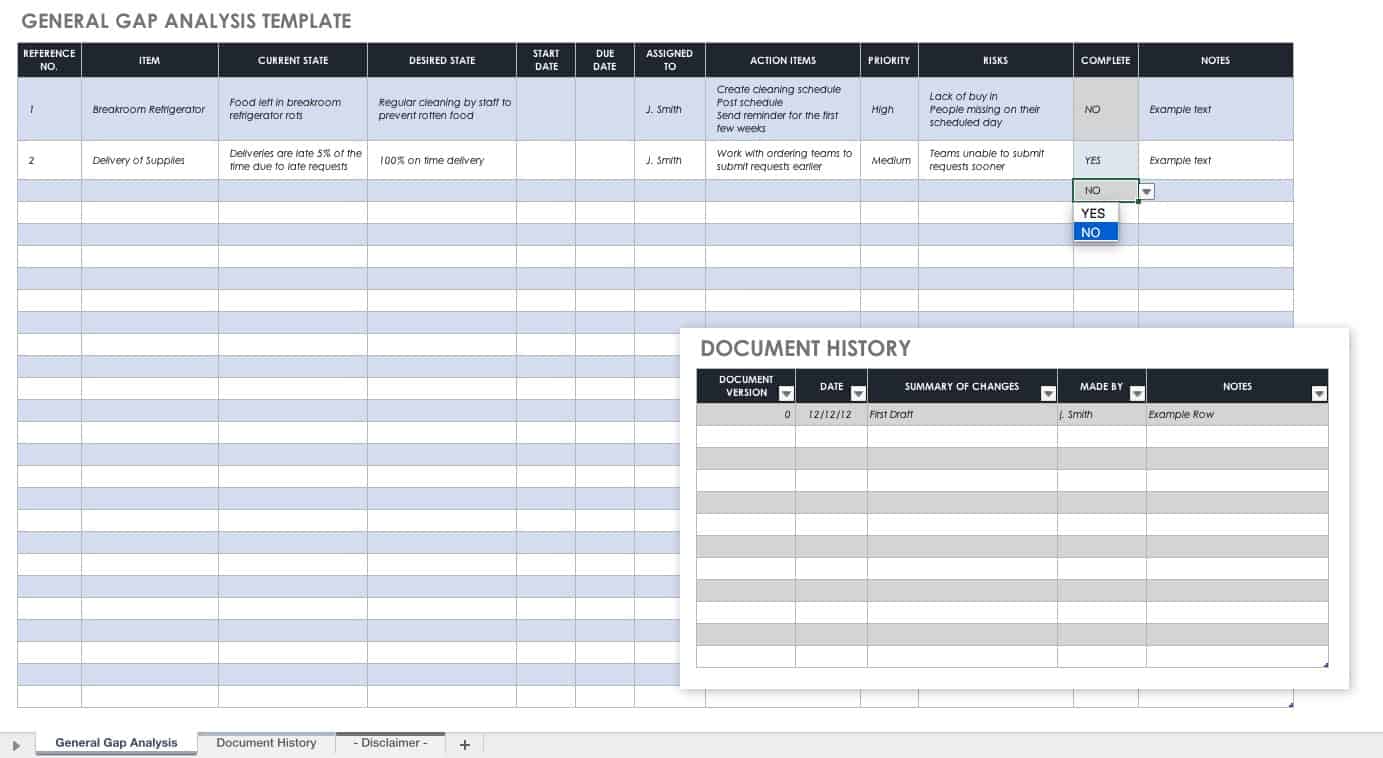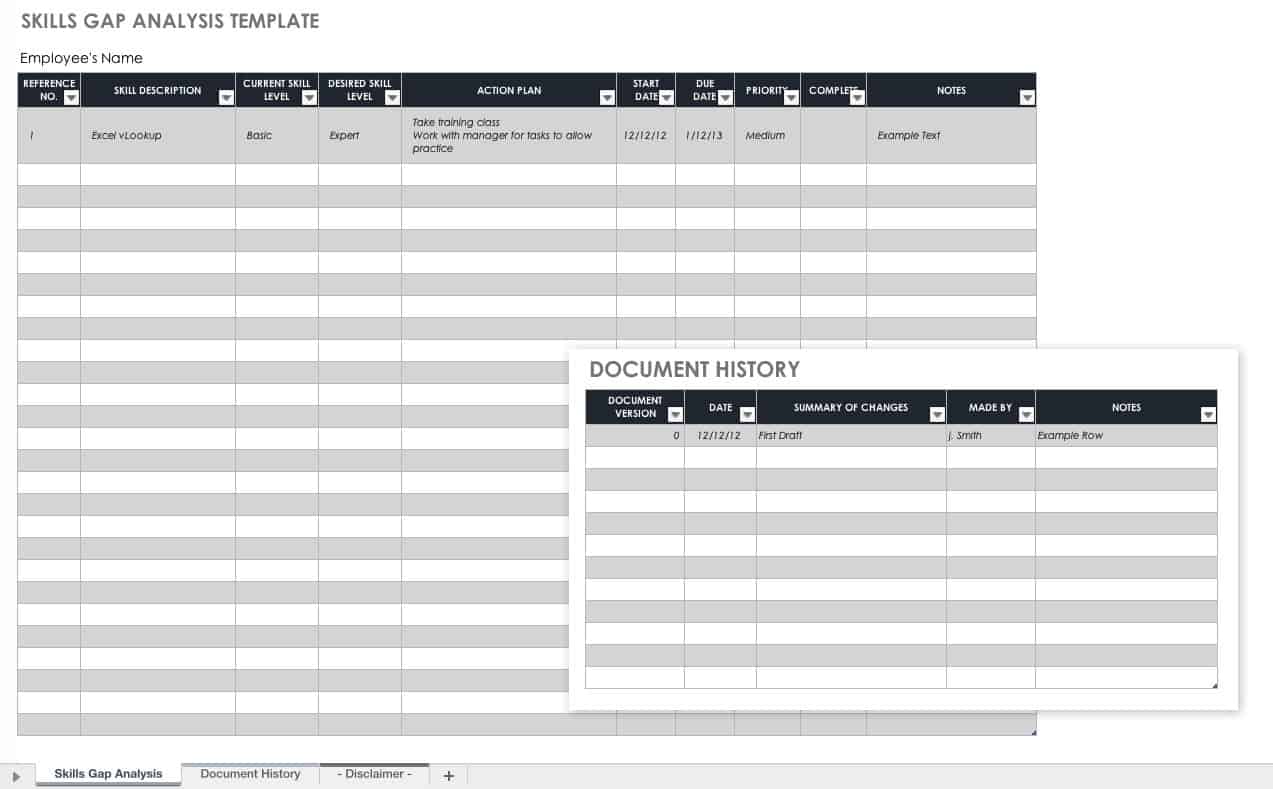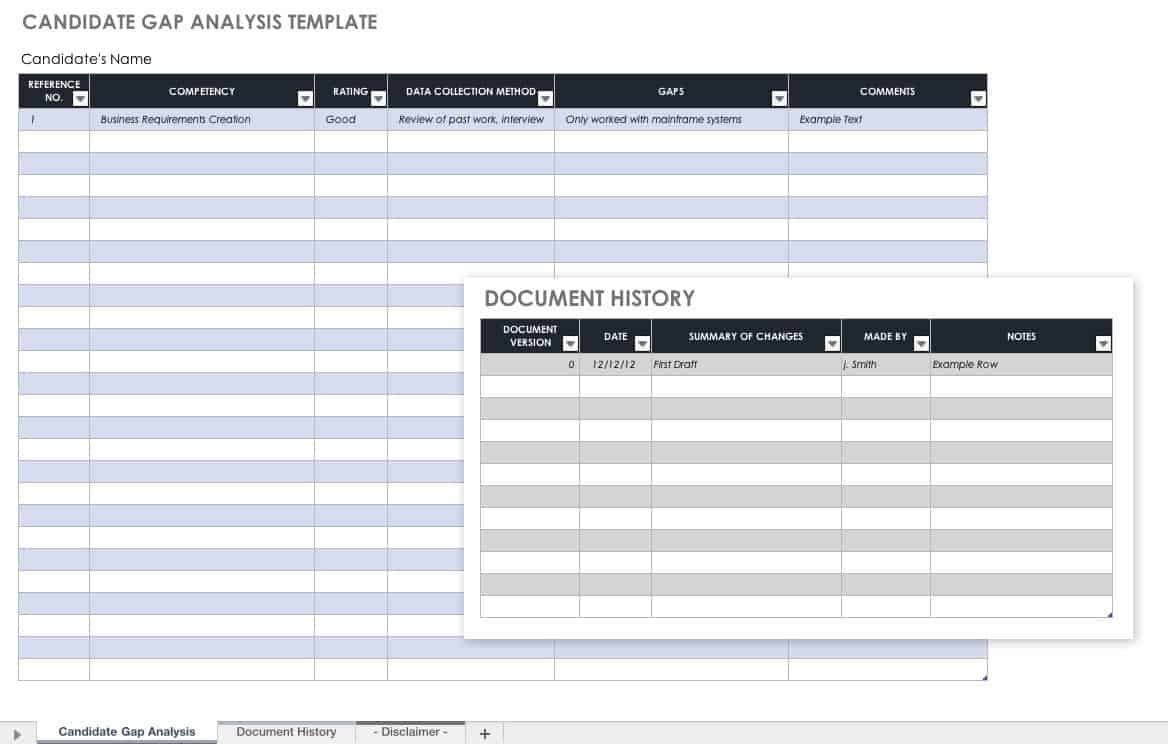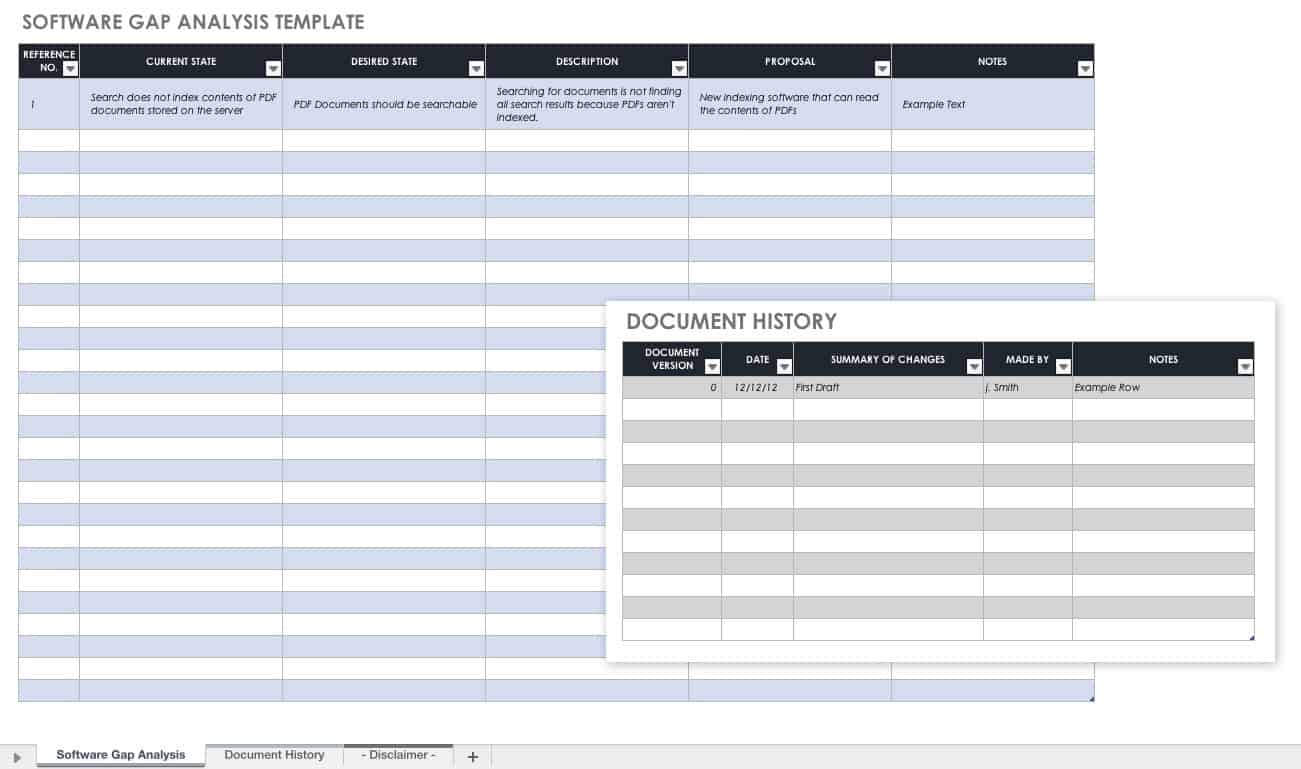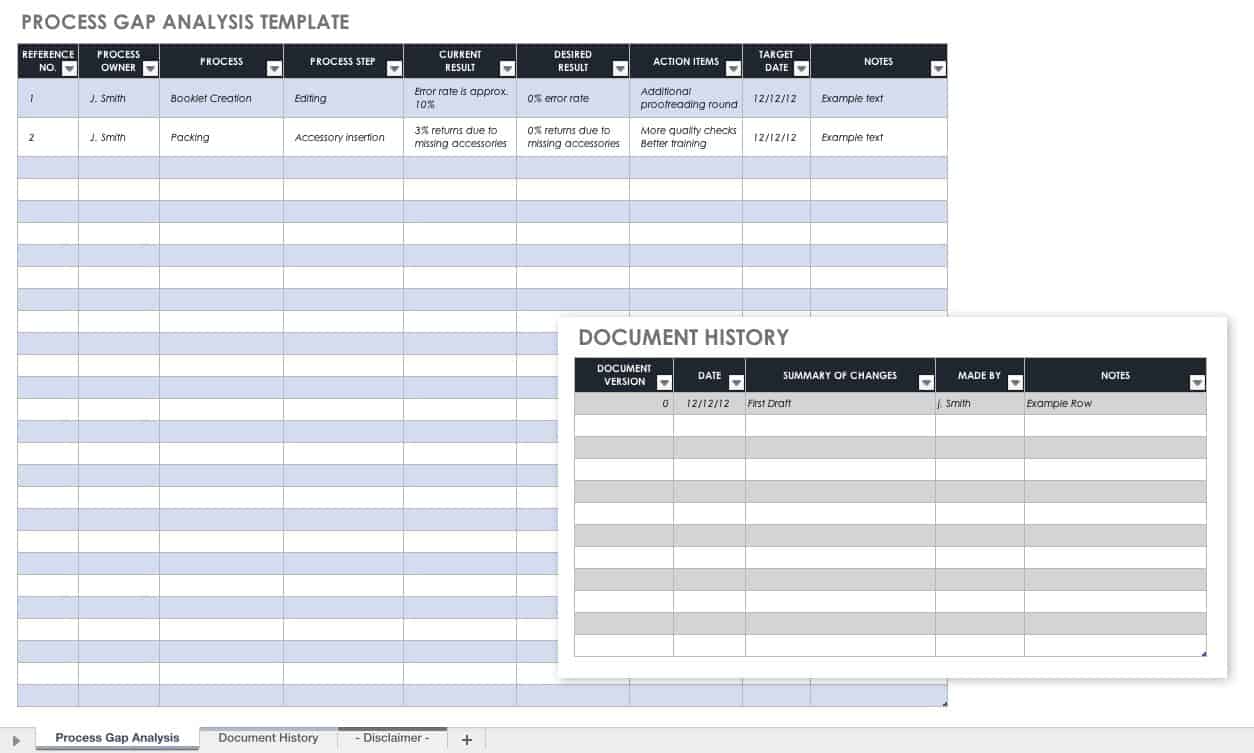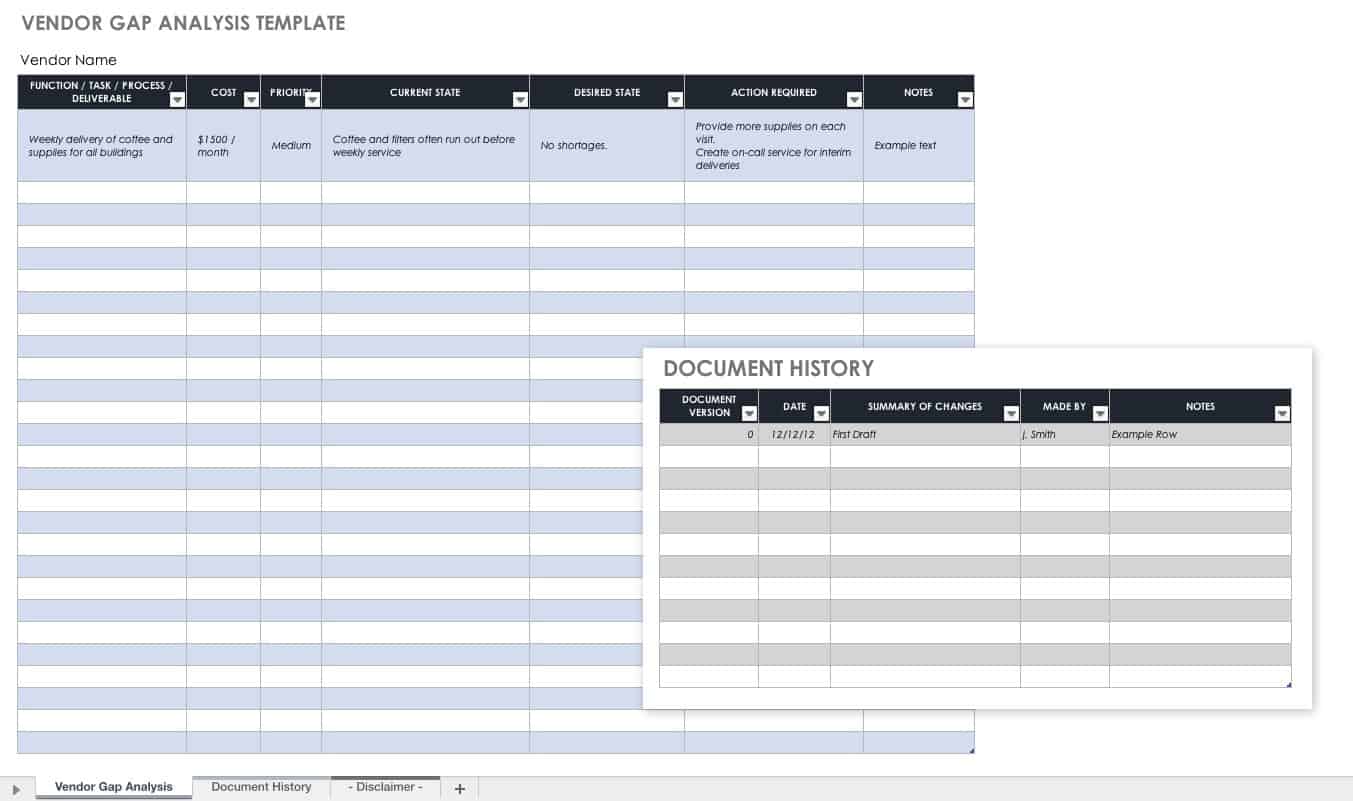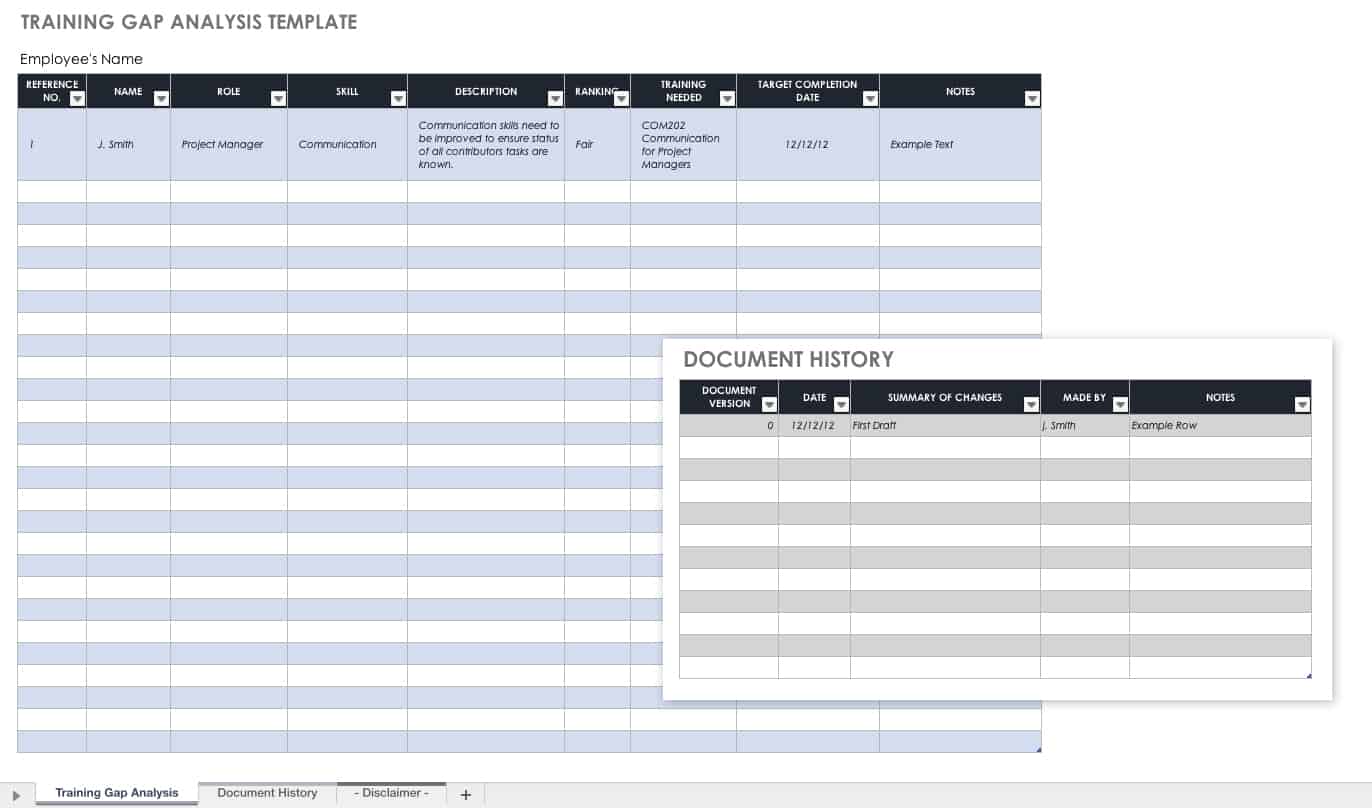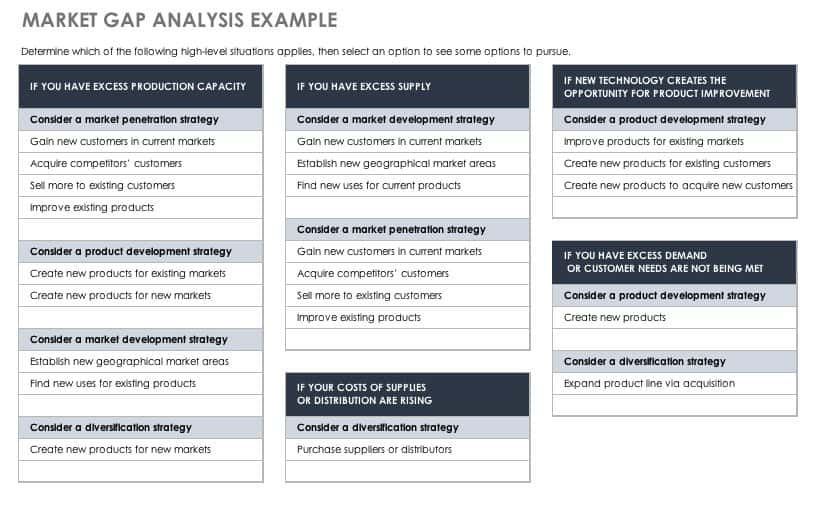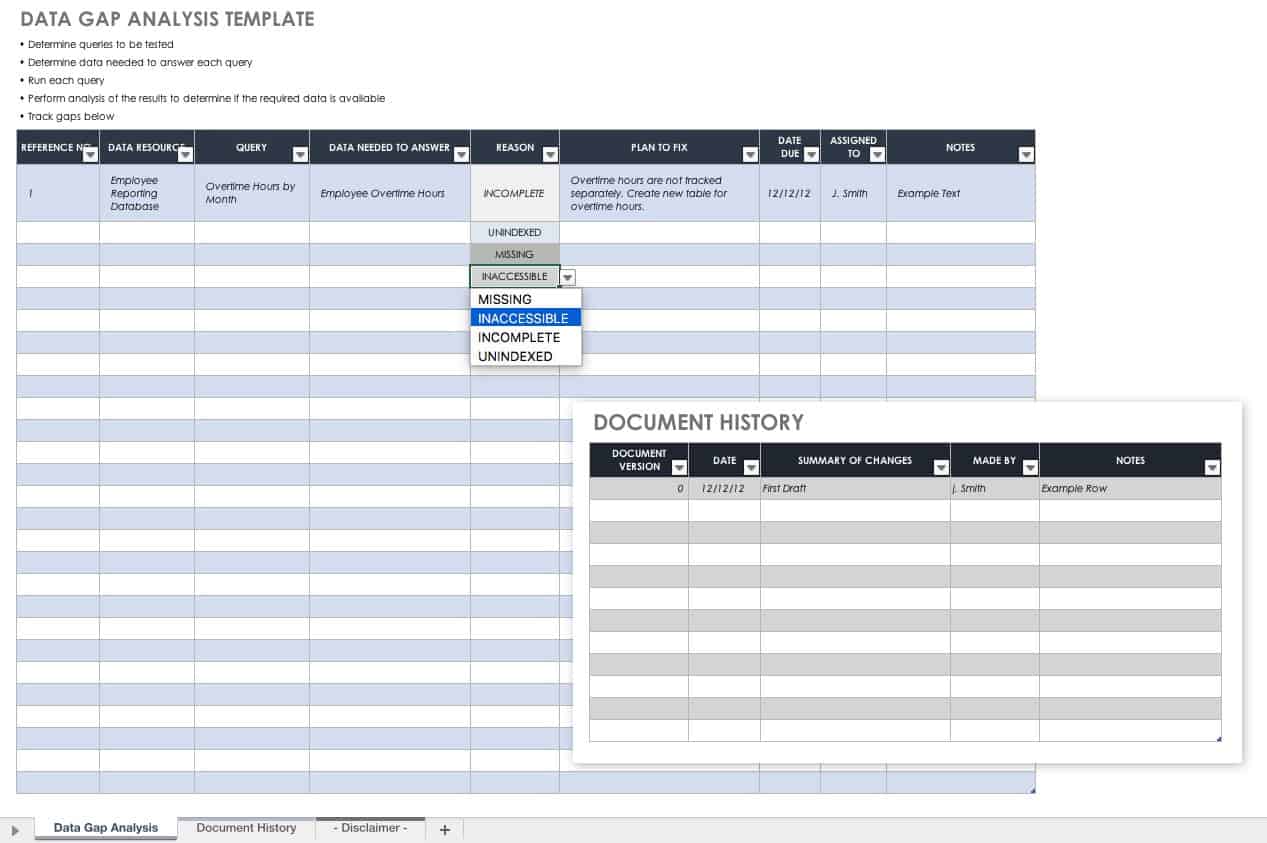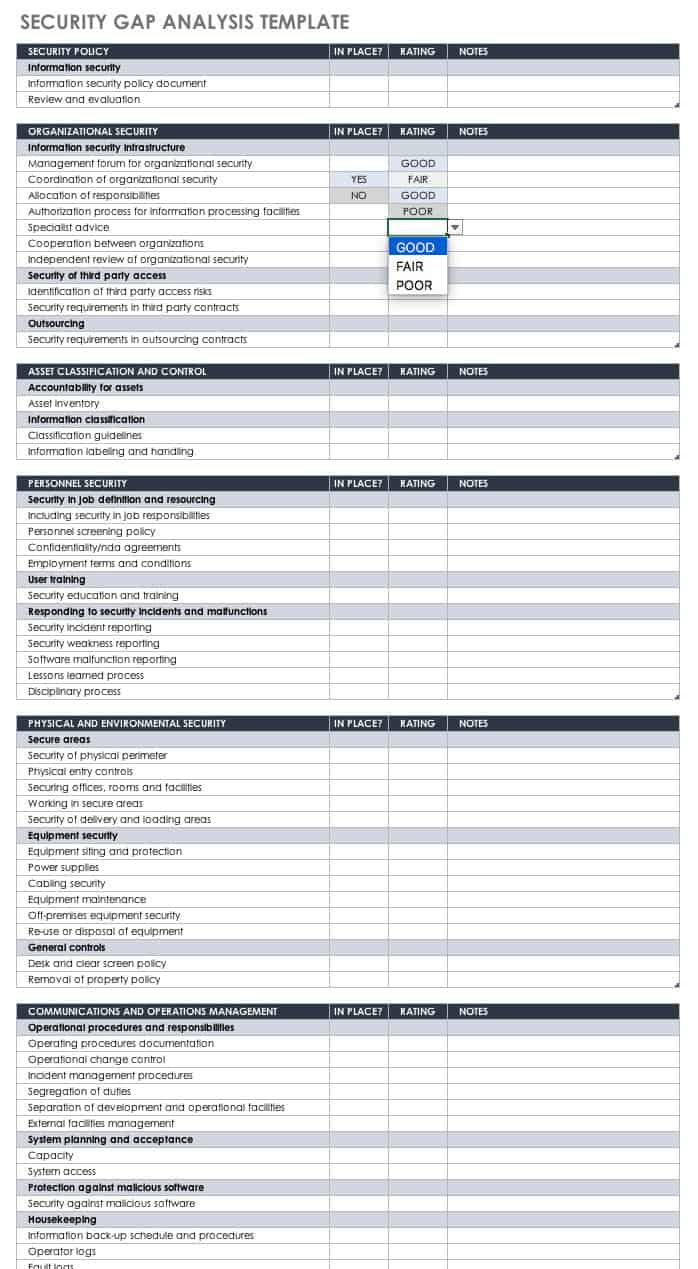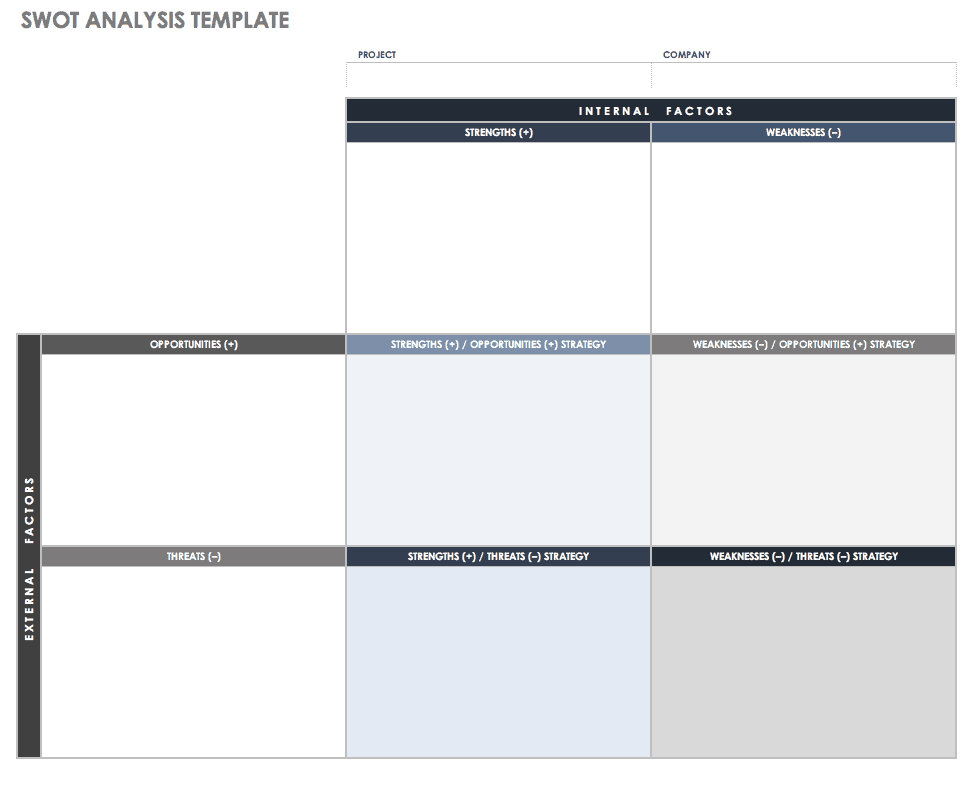Gap Analysis Templates
You can use the gap analysis templates below to document what you discover and the changes you need to make.
General Gap Analysis Template
Adapt this general gap analysis template to many situations, such as reviewing regulatory compliance or a cost benefit analysis. If a specific template for your needs isn’t available, or you aren’t sure where to start, use this template to find where gaps exist and guide the process of narrowing or eliminating them.
Download General Gap Analysis Template
Skills Gap Analysis Template
A skills gap analysis template guides an employee through updating their skills so that they are better qualified to receive promotions or improve their performance. The template provides spaces to list the skills, level of proficiency, and desired outcome. You’ll also find an area to create an action plan for the employee along with start and end dates.
Download Skills Gap Analysis Template
Candidate Gap Analysis Template
A candidate gap analysis template is an ideal choice to evaluate the skills of a person applying for a posting. The results of the gap will help you determine if the applicant would be a good addition to your organization. This template also includes space where you can rate the applicant’s competency, note existing gaps, and add comments.
Download Candidate Gap Analysis Template
Software Gap Template
A software gap template is useful for evaluating software that you’re considering purchasing (to see if will meet the company’s needs), or to assess existing software (to determine if it needs to be replaced). There is space to document the desired state, description of the need, and the proposed solution.
Download Software Gap Template
Process Gap Analysis Template
Use this process gap analysis template to consider existing processes and find out where they fall short, and to plan for how to improve or update the process. This template includes an area to describe the process, note the process owner, and state the current and desired results. Use action items and target date areas to start developing a plan to make improvements.
Download Process Gap Analysis Template
Vendor Gap Analysis Template
The vendor gap analysis template can help guide the selection of a new vendor or to evaluate the performance of an existing vendor. In this template, you’ll find an area for identifying your need, cost, and priority.
Download Vendor Gap Analysis Template
Training Gap Analysis Template
Perform a training gap analysis to determine which required and optional training courses employees need to complete in order to meet objectives. Complete the areas for role, skill, description, ranking, and training needed for each employee. Use the target completion date to formulate a plan to ensure that team members get the support they need.
Download Training Gap Analysis Template
Market Gap Analysis Template
Use a market gap analysis to discover new sales opportunities, areas where supply is not meeting demand, or areas for diversification. This method is based on the Ansoff Matrix technique. After you learn a general status, this template can direct a business toward possible high-level improvement options.
Download Market Gap Analysis Template
Data Gap Analysis Template
Perform a data gap analysis to find out what data is not available to answer queries that a user may pose, and to begin the process of making the data available. Use the template fields for data resource, query, data needed to answer, and reason to get an overview of the state of your data. Complete the plan to fix, due dates, and assigned sections to start to act on the results of the analysis.
Download Data Gap Analysis Template
Security Gap Analysis Template
The security gap analysis template can help track weakness in security policies, protocols, or documentation that help drive improvements. The template is divided into sections and can be used in whole or in part.
Download Security Gap Analysis Template
Other Kinds of Analysis
A gap analysis is one way to look for areas for improvement. But there are others. Here are a few that organizations will occasionally use.
SWOT: A SWOT (strengths, weaknesses, opportunities, threats) analysis prompts individuals or teams to look at both internal (strengths and weaknesses) as well as external (opportunities and threats) aspects. A gap analysis only examines internal aspects, and tends to focus on the weaknesses (which can also be called gaps, needs, or opportunities to improve). SWOT analysis is often performed as part of project management.
The results of a SWOT analysis are usually displayed in a four-part grid, with strengths and weaknesses at the top, the opportunities and threats below. This framework aligns internal items and external items horizontally, and positives and negatives vertically. If the template below doesn’t suit your needs, check out 14 Free SWOT Analysis Templates.
Download SWOT Analysis Template
Excel | Word | PDF | PowerPoint | Smartsheet
ISO 9001:2015: The International Organization for Standards (ISO) is comprised of national standards organizations from around the world. Families of standards are identified by numbers. The 9000 family deals with quality management systems, and 9001 specifies requirements for these systems. The current specification was released in 2015, and is referred to as 9001:2015 (which replaced 9001:2008). As described on the ISO site, 9001…
… specifies requirements for a quality management system when an organization:
a) needs to demonstrate its ability to consistently provide products and services that meet customer and applicable statutory and regulatory requirements, and
b) aims to enhance customer satisfaction through the effective application of the system, including processes for improvement of the system and the assurance of conformity to customer and applicable statutory and regulatory requirements.
All the requirements of ISO 9001:2015 are generic and are intended to be applicable to any organization, regardless of its type or size, or the products and services it provides.
An organization that subscribes to the ISO standards can use them to analyze their quality management systems and ensure compliance with international standards. This type of analysis is much more comprehensive and resource-intensive than a gap analysis.
Servqual: When customer expectations are not being met, Servqual can be used to get feedback via questions that focus on five dimensions. Those dimensions include the following:
- Reliability: Employees fulfilling promises to customers dependably.
- Assurance: Employees conveying convince and trust.
- Tangibles: The appearance of actual items, from a store to a flyer to a website.
- Empathy: Employees providing attention to individual customer needs.
- Responsiveness: Employees willingness to reply promptly.
This type of evaluation also discovers gaps, but is specific to differences in customer expectations versus reality.
Benefits of a Gap Analysis
A gap analysis helps document where improvements need be made, where results are falling short of potential, and the differences between actual and desired states. The results of a gap analysis can help inform how to drive process improvements, improve response times, increase employee skills, or determine if a candidate is a fit for a specific position.
The gap analysis process provides a framework for a structured analysis of many situations, and allows for a way to document shortfalls. Many MBA programs teach gap analysis as part of strategy classes, and it is also useful as a team-building exercise (as it can bring groups together to focus on a common purpose).
How to Perform a Gap Analysis
The high-level steps for a gap analysis are fairly simple, but because each situation is unique, the details will differ for each type of analysis performed. (For example, for a training, skills, or candidate gap analysis, the steps may be performed by the person in question, or by other people.)
- Define the scope of the analysis.
- Review and document the current state or results and determine what is missing, what falls short of potential, etc.
- Describe and document the desired state or results.
- Compare the current state or results and desired state or results, and document the differences. This is the gap.
- Determine and document the steps to be taken to close each gap.
If the steps required to close the gaps are simple, the gap analysis document can also be used to track them to completion. If the steps are more complex, the information can be used to manage a project to close them, or be divided among responsible parties or teams.
When Not to Use a Gap Analysis
A gap analysis is useful for many situations, but it does have shortcomings. By nature, it’s a one-time process: Once the documented changes have been made, the situation will have changed and all gathered information will be irrelevant. It’s also difficult to use a gap to get into complexities, as items are evaluated in isolation from each other.
Track Gap Analysis with Work Management in Smartsheet
Empower your people to go above and beyond with a flexible platform designed to match the needs of your team — and adapt as those needs change.
The Smartsheet platform makes it easy to plan, capture, manage, and report on work from anywhere, helping your team be more effective and get more done. Report on key metrics and get real-time visibility into work as it happens with roll-up reports, dashboards, and automated workflows built to keep your team connected and informed.
When teams have clarity into the work getting done, there’s no telling how much more they can accomplish in the same amount of time. Try Smartsheet for free, today.
